Team-BHP
(
https://www.team-bhp.com/forum/)
Introduction
Transport corporations are the no.1 people mover across the country after the railways, offering connectivity to small towns and villages that are, for the most part, not connected by rail. Despite their importance in helping people reach lesser known destinations safely and with back up arrangements in the event of a breakdown, they are often looked down upon as featuring rickety buses, unclean interiors, taking longer than normal, stopping at below average rest stops etc.. As a result, such corporations do not get the due or the patronage that they deserve. These posts are my small way of
1. acknowledging the efforts of those countless crew members, workshops, and support staff that keep the wheels of transport corporations moving.
2. showcasing how I have seen a transport corporation’s offerings transform over the years
From this  To this
To this 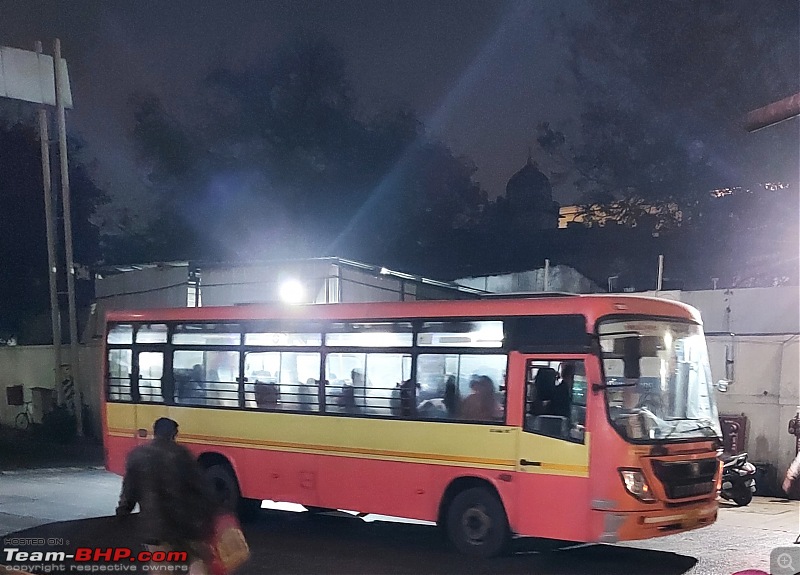
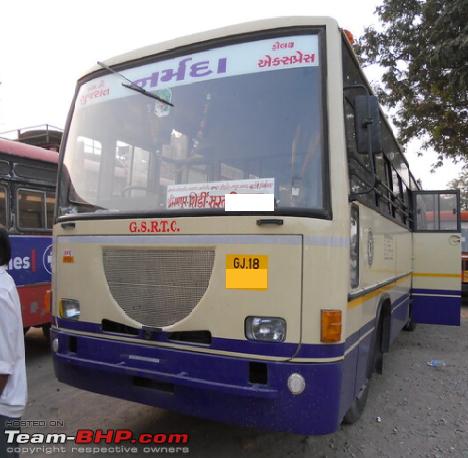

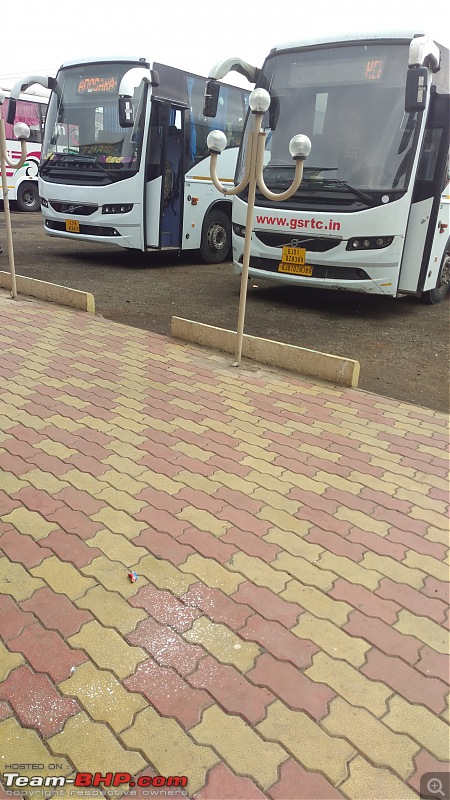
How it all started
While I have resided in many cities and towns across states in India, the first time I stepped into a public transport bus was in the mid-70s in what used to be called the Pallavan Transport Corporation(PTC) in Chennai. This is now re-christened Metropolitan Transport Corporation(MTC). After moving up north, I don’t remember taking any public transport even in Delhi with the famed DTC. After moving back south in the 80s, I was amazed to see how well transport in TN was managed via the various zonal corporations named after kings, and the state express transport corporation named Thiruvalluvar Transport Corporation(TTC).
Enter GSRTC
Fast forward to 1991 – I moved to Gujarat for work, and was appalled to see the condition of most buses plying here; in stark contrast to what I had experienced in TN. Private players in Gujarat would offer sleeper coaches way back then, but the state corporation buses were just one type and generally in below average shape. My first ride in a transport corporation bus was in a local bus in Surat in 1991 – the local buses were surprisingly quite new, and featured the Leyland Hino engines that had their characteristic silent note. The outstation buses, were, by and large, poorly kept barring some outstanding ones bound for far off places like Amreli. Good or bad, GSRTC had only one standard type of offering – the conventional 3+2 seater bus, with a lot of metal, but not-so-much mettle. Given the state of highways then, journeys were a nightmare.
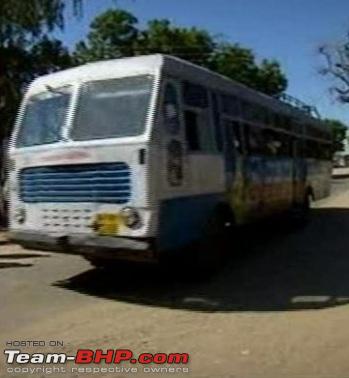
My first rides in an outstation GSRTC bus
This happened sometime in 2002, when I needed to travel to Vadodara at short notice. I had to choose between standing in the general coach of a train, with people already packed like sardines, or take a bus. The bus would take approx. an hour and 45 minutes more than a superfast train for a 150km distance, but at least I could get to sit. This was a Surat-Dahod bus and very early into the journey, I realized that the bus wouldn’t cross 65 kmph. Having decided to travel, I just took the ride. The ride wasn’t anything great, with seats that had less foam and more fiber, a constantly rattling overhead metal luggage bin, a below average rest stop, and the bus huffed and puffed, reaching Vadodara in four hours 15 mins; this, despite any traffic hold ups.
My next outstation ride, again unplanned, was from Nasik to Surat, again in a standard bus sometime in 2006-07. This bus, was however, in much better state with a wall clock, better interiors, but then, would go through the various bus stations enroute to eventually reach Surat in 7 hours.
One standard bus, average seats, lower frequency - all this was going to change, and change in style. This corporation, the GSRTC can now boast of the widest offering of buses to cater to various segments of travelers.
Fast forward to 2012
I did Surat-Ankleshwar a couple of times , and Surat – Bharuch once, and started seeing a huge change in offerings and quality of GSRTC. For the first time, I saw a GSRTC bus that was painted light red, and for the first time, I saw the bus sporting an entry door right in the front, unlike the hitherto center. The 3+2 seating remained, but the seats were a pleasant light brown. I was at Zadeshwar crossing Bharuch in approx. 1.5 hours, which was a cool 30 minutes shorter than my ride in 2002. I later discovered that these light red buses were called Gurjarnagari. My return ride was by a GSRTC AC seater bus that took about the same time, but was super comfortable – 2+2 recliner seats with the ticket priced a mere 18 rupees more than the Gurjarnagari. By then longer routes had happened, and I remember seeing Ahmedabad – Pune AC seater buses too.
 Fast forward to 2018
Fast forward to 2018
I was out of Gujarat for a few years, and when fate brought me back, I was amazed to see this huge transformation in GSRTC buses, and was actually amazed at the variety – Ordinary, Express,
Gurjarnagari, Sleeper seater, AC Sleeper, AC Seater, Volvo seater, Volvo Celeste Sleeper. From shying away from these buses some years ago to actually seeing the change, I decided to try them out for my intercity journeys.
My first ride in a renewed GSRTC was by a Volvo seater from Surat to Vadodara sometime in Sep-2018, and what an amazing experience it was. ₹286 for a 150km ride that took just 3 hours 10 mins, with one scheduled rest stop. I found the Volvo much better maintained than even private operators.
The ball was thus set rolling and I then almost forgot train rides for short distances, using GSRTC. In fact in 2018-19, I lay claim to be one of the few who has ridden in ALL types of GSRTC buses except the AC seater. Sharing my experiences here:
Between Surat and Ankleshwar - one needs to keep switching lanes because both the right lanes are used up by truckers https://www.youtube.com/watch?v=4UTIY_WmmdE On the Narmada bridge https://www.youtube.com/watch?v=CKXedm7xLXA Inside the Volvo 
 Our bus resting alongside a Surat-Bhuj Volvo
Our bus resting alongside a Surat-Bhuj Volvo 
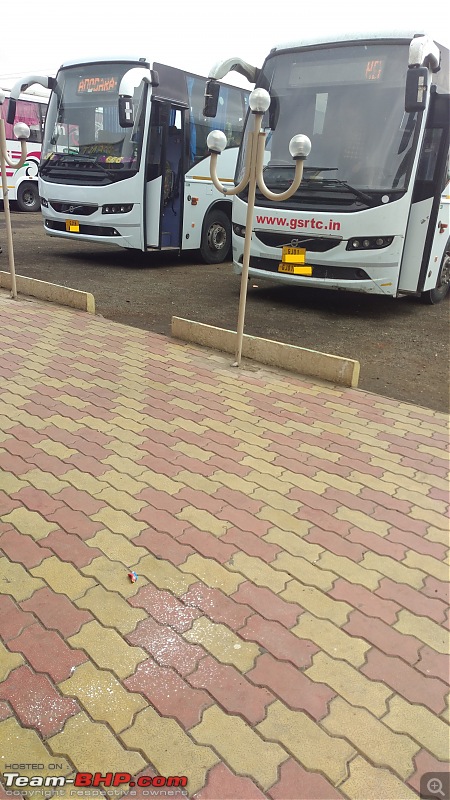
Common impressions across all categories of GSRTC buses
Likes
• Well maintained, with no awkward transmission noise(especially differential noise)
• Neatly kept, save for some groundnut kernels and the odd chips packs thrown by irresponsible passengers in the non-AC buses
• First Aid kit, Emergency exits in all buses
• Comfortable seats – I’ve done four hour journeys without having to move my bum around in discomfort :D
• Overall exterior in good shape minus side-sweep marks. I have seen many buses with damaged and repaired fronts, though
• Both brake lights, and the parking lights work on all buses even after several years
• On time departures at the point of origin, and buses keep time unless there are traffic snarls on NH48
• All buses’ drivers conditioned to cap their speed at 80-85kmph. Unlike TNSTC buses where the fuel pumps would be “locked” to prevent buses from going beyond a stipulated speed, here the potential was there but drivers would keep a check on their adrenalin
• No breakdowns on the several trips that I undertook
What could be better
• Rest stops mostly below average
Category-wise experience Express
• White and grey shade
• 52 seater, 3+2 seating
• Entry/exit door in the center
• Driver cabin separated from the passenger cabin
• Glass sliding windows
• Firm seats that offer a comfortable ride over several hundred kms
• Best timing: 3hours 20 minutes from Surat CBS to Vadodara CBS by a Chikhli to Ahmedabad Ranip Express bus - one 15 minute halt and going through all bus stops at Kim, Kosamba, Ankleshwar, GNFC, Palej, Karjan, Makarapura
• Worst timing: 4 hours 05 minutes from Vadodara-Surat by a Vadodara to Ukai bus – partly contributed by a 30 minute hold up on NH48 just short of the Narmada chowkdi at Bharuch
GSRTC Express  Inside a GSRTC Express - even a trash can was provided
Inside a GSRTC Express - even a trash can was provided  Pre-2017 Express - note the exterior shade
Pre-2017 Express - note the exterior shade 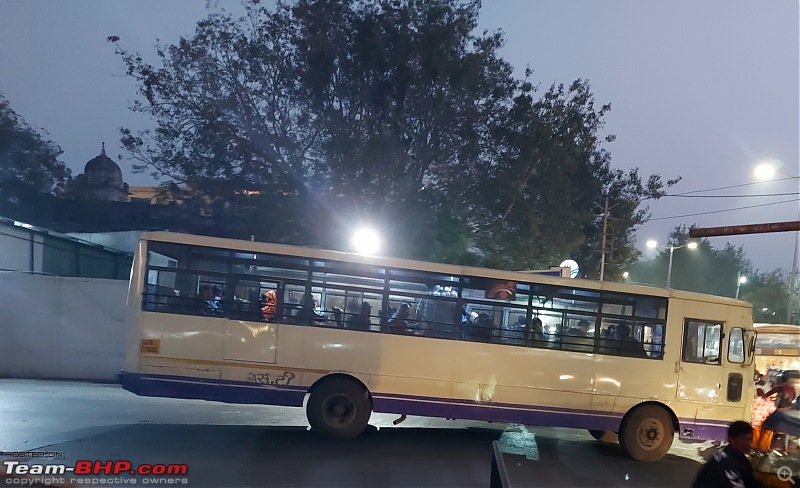 The latest BS6 Express - note the longish front
The latest BS6 Express - note the longish front  Gurjarnagari
Gurjarnagari
• Light red shade
• 46 seater, 3+2 seating
• Entry/exit door in the front
• Seats with better headrests and marginally more legroom than the Express
• Glass sliding windows
• Fare approx. 10% more than Express
• Have used this bus only on the Vadodara-Ahmedabad sector
• Best timing : 1 hour 40 mins from Vadodara CBS to Ahmedabad Gita Mandir CBS by an Aurangabad to Ahmedabad bus - non-stop via NE1
• Worst timing : 2 hours 10 minutes from Ahmedabad Gita Mandir CBS to Vadodara CBS - in evening traffic using the BRTS lanes almost till CTM Crossroads
• Best ride : 2 hours 15 minutes Ahmedabad Gita Mandir CBS to Vadodara CBS in torrential downpour and low visibility - absolutely zero water leaks except some minor seepage via the wheel wells onto the aisle
I'm not too sure but don't see new
Gurjarnagaris having been introduced in the BS6 avatar
Gurjarnagari beautifully decked  Gurjarnagari cabin
Gurjarnagari cabin 
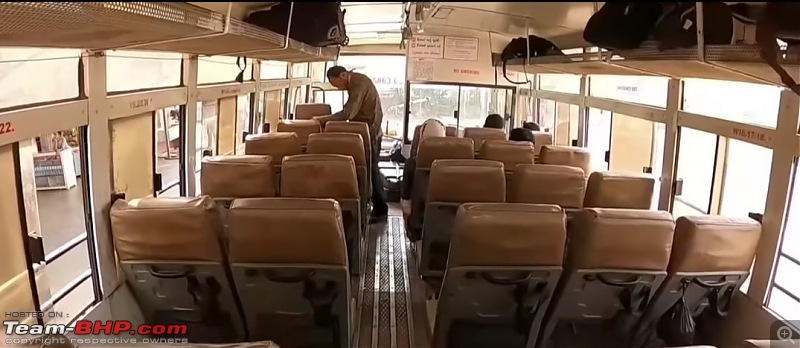 Gurjarnagari clicked in 2022 - still looks good
Gurjarnagari clicked in 2022 - still looks good 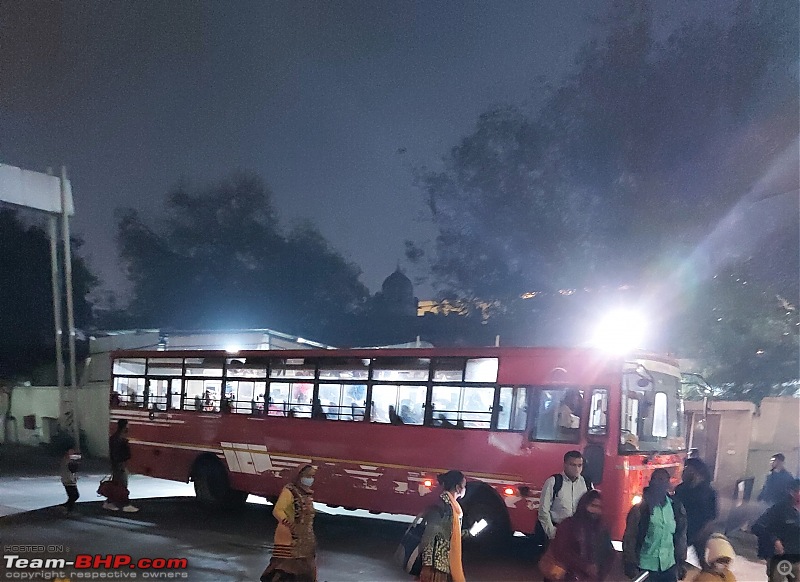
Non-AC Sleeper Seater
• Blue and silver shade
• 15 berths on the top and 30 seats beneath in a 1+2 formation
• The high point of travel in this bus is the “exclusivity” and coziness one enjoys when in the single seats on the left aisle
• Entry/exit door in the front
• Best timing: 3 hours from Vadodara CBS to Surat CBS by a Junagadh to Surat sleeper-seater bus - non-stop with entry only to Makarapura and Ankleshwar Bus Station
• Worst timing: 4 hours from Surat CBS to Vadodara CBS by Surat - Morbi bus with entry to Ankleshwar, GNFC, Makarapura bus stations. In this case , the delay was due to a long unscheduled stop in Varachha waiting for a passenger plus the driver took a cool 40 minutes to finish his dinner
Non-AC Sleeper Seater  Non-AC Sleeper Seater - clicked in 2022
Non-AC Sleeper Seater - clicked in 2022 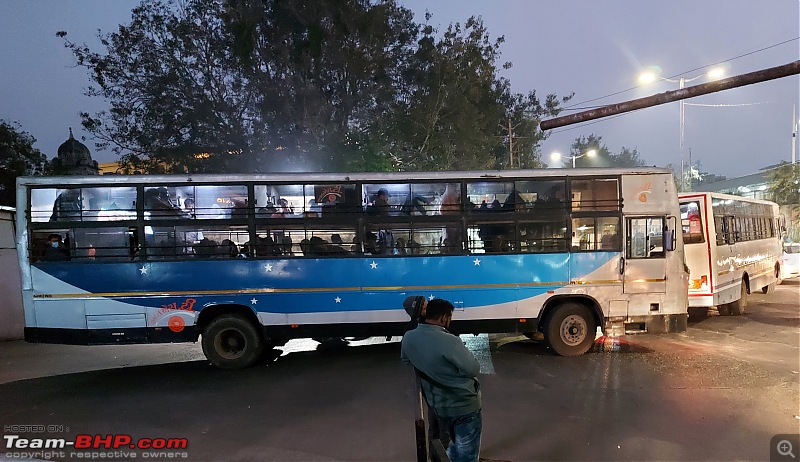 AC Sleeper
AC Sleeper
• Dark blue with a white band
• 30 berths in lower and upper levels in the 1+2 formation
• Entry/exit door in the front
• Only one trip from Vadodara CBS to Surat CBS
• 2 hours 50 minutes from Vadodara CBS to Surat CBS by a Netra to Surat Ashok Leyland AC sleeper bus, non-stop with entry only to Makarapura and Ankleshwar Bus Station
PS: Netra is a small village under Nakhatrana taluk, very close to the border; goes to show how even remote places are connected by the transport corporation.
AC Sleeper 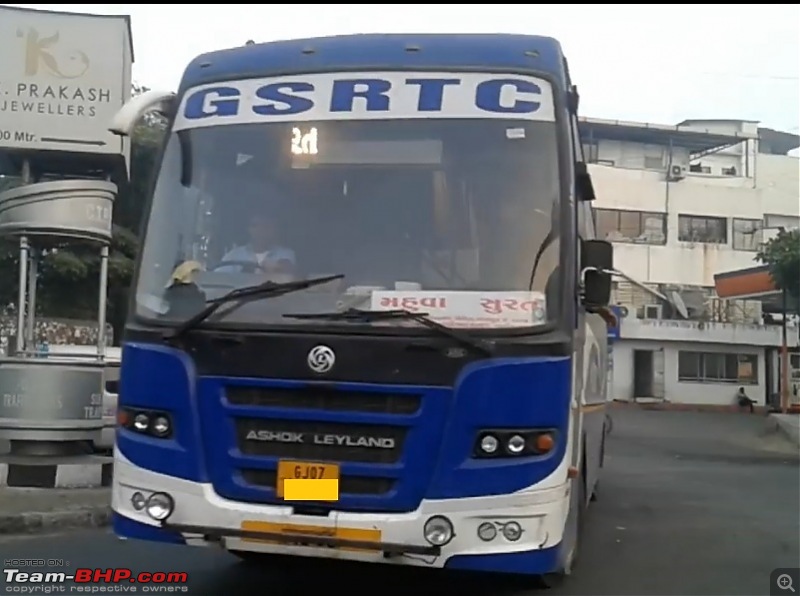
 AC Seater
AC Seater
• Dark blue with a white band
• 46 recliner seats in a 2+2 formation
These buses mostly ply only on the Ahmedabad to Saurashtra sector, and I haven’t travelled by this category.
However, I did manage to snap one plying from Statue of Unity to Gandhinagar
AC Seater 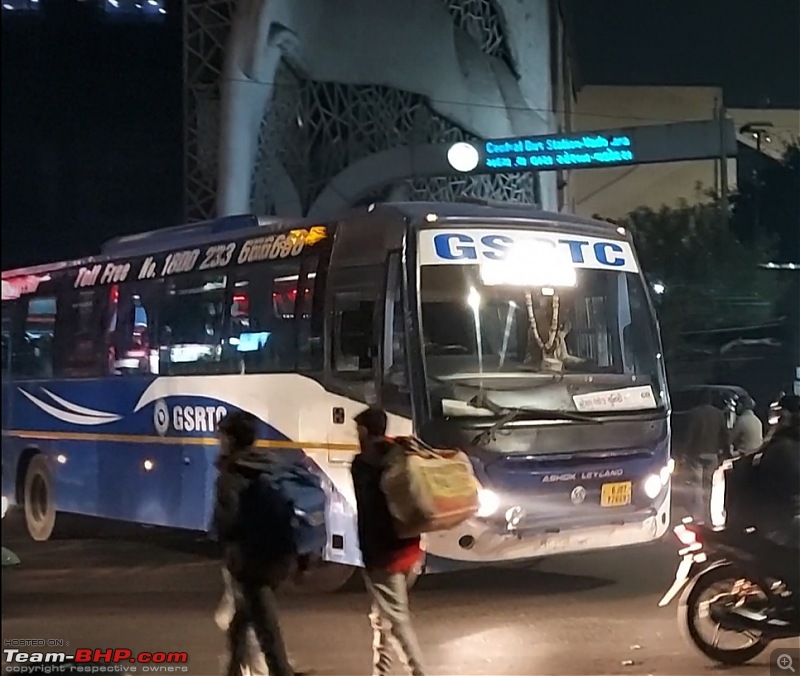
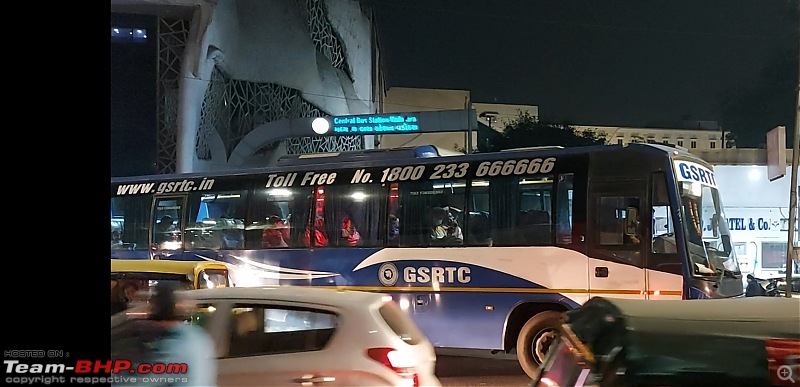
Volvo AC Seater
• White
• stock construction by Volvo
• 9400 series with one axle at the rear
• 46 recliner seats in a 2+2 formation
• Best timing: 3 hours 10 mins from Surat CBS to Vadodara CBS, with one 15 minute halt and going through Ankleshwar, GNFC, Makarapura bus stations
• Worst timing: 3 hours 30 minutes on the same sector as above. This promised to be a record breaker but the driver took a 45 minute breakfast halt, spoiling all the thrill :unhappy
GSRTC Volvos - in 2018 
 GSRTC Volvo on NE1
GSRTC Volvo on NE1 
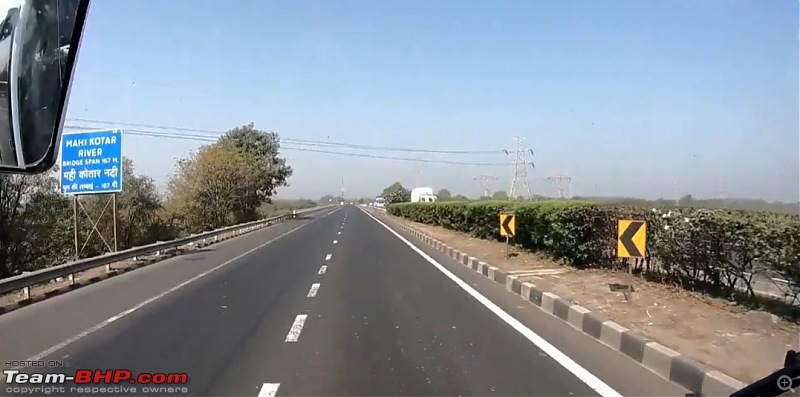 GSRTC Volvo in 2022 - still looks great
GSRTC Volvo in 2022 - still looks great 
 Volvo Celeste Sleeper
Volvo Celeste Sleeper
• Dark blue with a white band
• 9400 series with one axle at the rear
• 30 berths in lower and upper levels in the 1+2 formation
• Entry/exit door in the front
• Only one trip from Surat CBS to Vadodara CBS : 3 hours 40 minutes from by a Surat-Jaipur Volvo sleeper bus - non-stop with entry to Ankleshwar, GNFC and Makarapura bus stations. Driver drove extremely slow and there were two unscheduled rest stops on request from passengers who wanted to ease themselves
In this case, I observed that the bus entered Ankleshwar Bus station despite being full; maybe it was a time entry
Sample pics of the Volvo Celeste sleeper 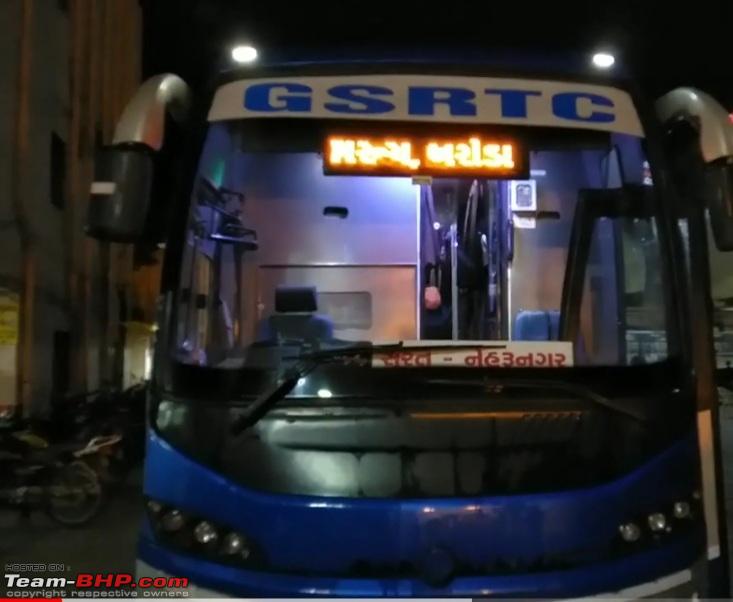


Having used all modes except the AC seater, what came out common was that the journey was not at all boring despite buses taking much longer than trains on the Surat-Vadodara sector. I also found that most folks here prefer to drive the distance than use public transport.
Summing it up
GSRTC has come a long long way from what I’ve seen them in 1990s; an unbelievable transformation I’d say. It’s my wish that the corporation keeps up its great progress that has been achieved with so much of pain, but somewhere down there I feel that there are many challenges to keep the tempo up !!! Passenger support is definitely getting better, and I hope GSRTC doesn’t let them down.
Meanwhile, I know that there are many such corporations in the country, and would love you all to chip in with changes that you’ve seen in them.
Wish You all a happy festival !!
Thank you for sharing. Wonderful write up and commendable effort in collecting and structuring this detailed information :thumbs up. It is learning experience for me to know about the progression of other state public transportation systems. I can vouch Karnataka has also underwent similar transition and KSTRC is among the best maintained public bus transportation organisations.On the other hand, in my native state, APSRTC is on the path of becoming nothing from what once was a leading fleet in terms of vehicle numbers, quality of service and revenues.
An excellent thread ! This thread drives me down the memory lane specially 2009-2010 when I used to frequently visit Ahmedabad. As righty pointed out, the busses are capped at 80kmph or so, there is a small panel under dashboard where in the when driver overspeeds the fuel is cut off and a red light glows on that panel. I noticed this when I used to travel via these busses in the scorching summers of Gujarat. While I am not against speed limits, it must be raised to 90 kmph in my view. My trips to Ahmedabad have shot up and I drive on NE1 atleast once a month, I dont think the speed limits for non-Volvo fleet has changed.
Although well behaved overall, somehow I have observed that the arrogance of bus drivers have gone up in case of GSRTC. Had a road rage incident too on NE1 which was carried forward to Vadodara city. A GSRTC volvo bus tried to bully me on NE1, then inside city premises driver got off the bus and was not wearing a mask. How and why does a driver need to get off the driving seat in middle of a busy road just to argue is beyond me. His continued arguing with me lead to bus passengers coming down and asking him to move on. Also, GSRTC bus drivers wont move to driving lane on NE1 but will continue to drive in the right most lane on highways, as a consequence there is no option for car drivers but to overtake from left.
On state highways things are a bit better but the GSRTC buses can now rival private operators for bullying small vehicles while overtaking on single lane highways. Hope things improve. Very heavy traffic density plus slow buses add to agony of drivers and frequent acceleration and deceleration cycles could be very frustrating for non volvo fleet drivers.
Lastly what I have observed is nomenclature, for example if a bus has Sabarmati written on front windscreen, its origin is from Ahmedabad, if its Vishwamitri, its origin is Vadodara. Dont remember all names though.
Thanks for this article bringing back memories of travelling in state transport buses. I agree that TN used to maintain a reasonable standard even then, though I do remember a few breakdowns.I guess all the states would have upgraded by now and the next paragraph illustrates what would be now unacceptable.
My most memorable bus trip was in an APSRTC bus from Tirupati to Chithoor in the early seventies. As it suddenly started pouring cats and dogs, the roof was leaking till it felt there was no difference between being inside or outside. The strange thing was without a murmur or complaint the passengers pulled out their umbrellas inside the running bus and sat patiently and this remains a favourite childhood memory. Their long distance buses were however top class then having travelled from Chithoor to Hyderabad in 1975.
A good writeup literally taking us about GSRTC from 1971 to 2022. You have just documented the transformation of GSRTC in a short and sweet manner. Happy to see STUs in India flourishing.
BTW, it would be nice if you touch down on the following points of GSRTC:
1. Class of services in city transport in major cities of Gujarat.
2. Fleet strength of GSRTC giving breakdown of each class of service.
3. Important interstate destinations coveted by GSRTC.
Can't but agree fully. I stay in Rajkot. Have used the services frequently since 1971. GSRTC is well run and reasonably priced. The interior villages are connected to the nearby large city in a hub and spoke manner like airlines. They are the lifeline for all villages in Gujarat. Madhya pradesh the neighbour has no state transport to speak of. Proud to be in Gujarat
| All times are GMT +5.5. The time now is 09:18. | |



































